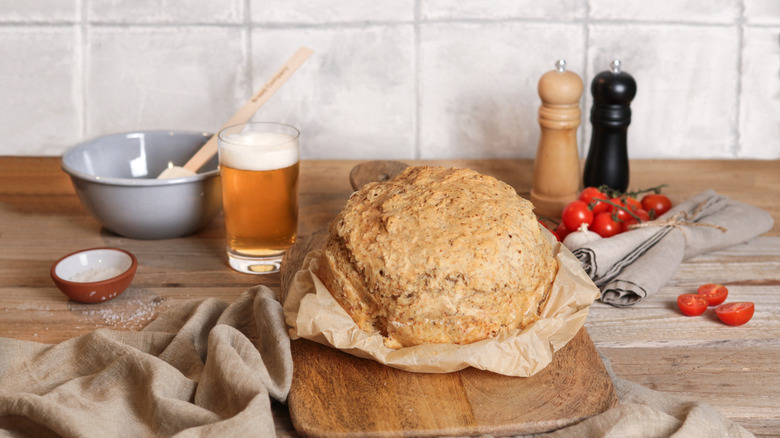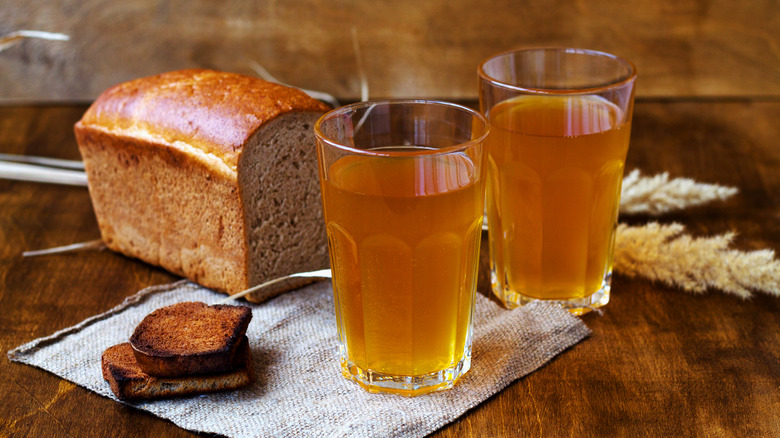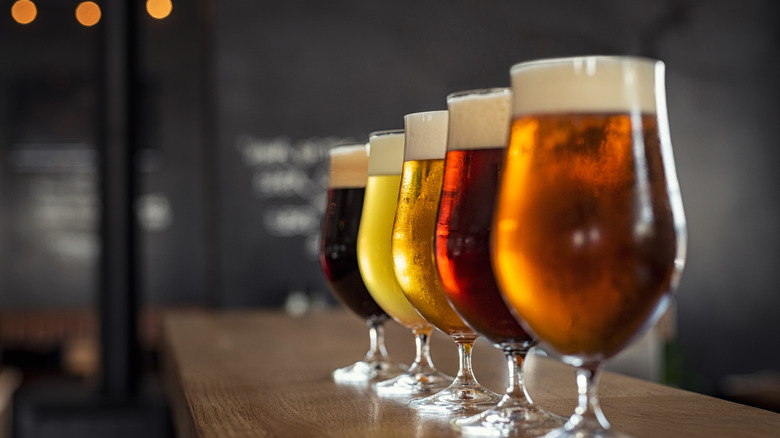The Simple Mistake That's Making Your Beer Bread Dense
A glass of beer pairs well with many things: An evening out with friends, a backyard barbecue, cheering on your favorite team, a warm summer's day, or a chilly winter's night. But if you limit the beverage's function to merely tasty hydration, it's time to step into the kitchen and explore beer's full potential — because the libation takes bread to a whole new level. The carbonation and yeast in the beer react with the baking powder and flour in the dough to act as a leavening agent, so the beer in the batter produces a moist texture and extra rise in the resulting bread. Beer bread is a simple recipe that yields a savory, chewy, soft, and pleasantly dense loaf.
However, if you're not careful, this quick and simple dough can turn too dense very quickly, and the bread will exit the oven disagreeably heavy with no trace of the desired moistness. Luckily, if you encounter this problem every time you break out the beer and the batter, there is an easy fix for your next loaf: Watch how much you're working it. Overworking the dough of your beer bread will affect the texture, causing it to turn from soft and chewy to tough and condensed.
When it comes to beer bread, don't work too hard
Beer bread is simple and doesn't require the same kneading as other bread recipes. In fact, for beer bread, the mixing should be minimal — which can be a challenge of its own. For many types of bread, over-kneading is fairly uncommon if you're kneading by hand because you can feel when the dough is becoming tough under your fingers. Kneading forms the protein molecules that create the gluten strands that allow the bread to rise. But when you do it too long, the liquid molecules are harmed, and rather than being stretchy, the dough becomes stiff and begins to tear. If you bake an overworked dough, it will come out hard.
Even though you aren't kneading beer bread, the same principle applies. It can be harder to tell when the dough is overworked, though, since you won't feel it in your hands and the mixture isn't supposed to be smooth. Instead, rely on your eyes. To avoid too much mixing, it's best to combine the beer with the dry ingredients only until they are just incorporated. You want to make sure that no pockets of flour are visible, but as soon as the flour is gone, it's time to stop working it. For a bread like this, electric mixers can cause more harm than good. Since they mix so quickly, the batter could be over-mixed before you realize it — so rely on a spoon and elbow grease.
Choosing the best beer for your perfectly mixed beer bread
Beer's yeast and carbonation content are what make it an easy bread leavening agent — but the style will come down more to your own personal preference for the flavor and color of beer you want to be incorporated into your bread. If you're looking for a deep brown color and a coffee and chocolate flavor, then Guinness will be the best choice for beer bread. You will find a delicious richness in the stout that stands out in both color and taste.
Lighter beers won't be as flavorful, but they can still be a good choice if you're going for subtlety in the flavor profile. Very hoppy beers can be flavor-forward, but as long as the bitter hops appeal to you (and the crowd you're feeding), they can be a delicious choice. Since beer bread has such a basic recipe, it's easy to add extra ingredients like herbs or cheese or even something sweet like cranberries — so if you're experimenting with additions, that can also affect the beer you're mixing in.


